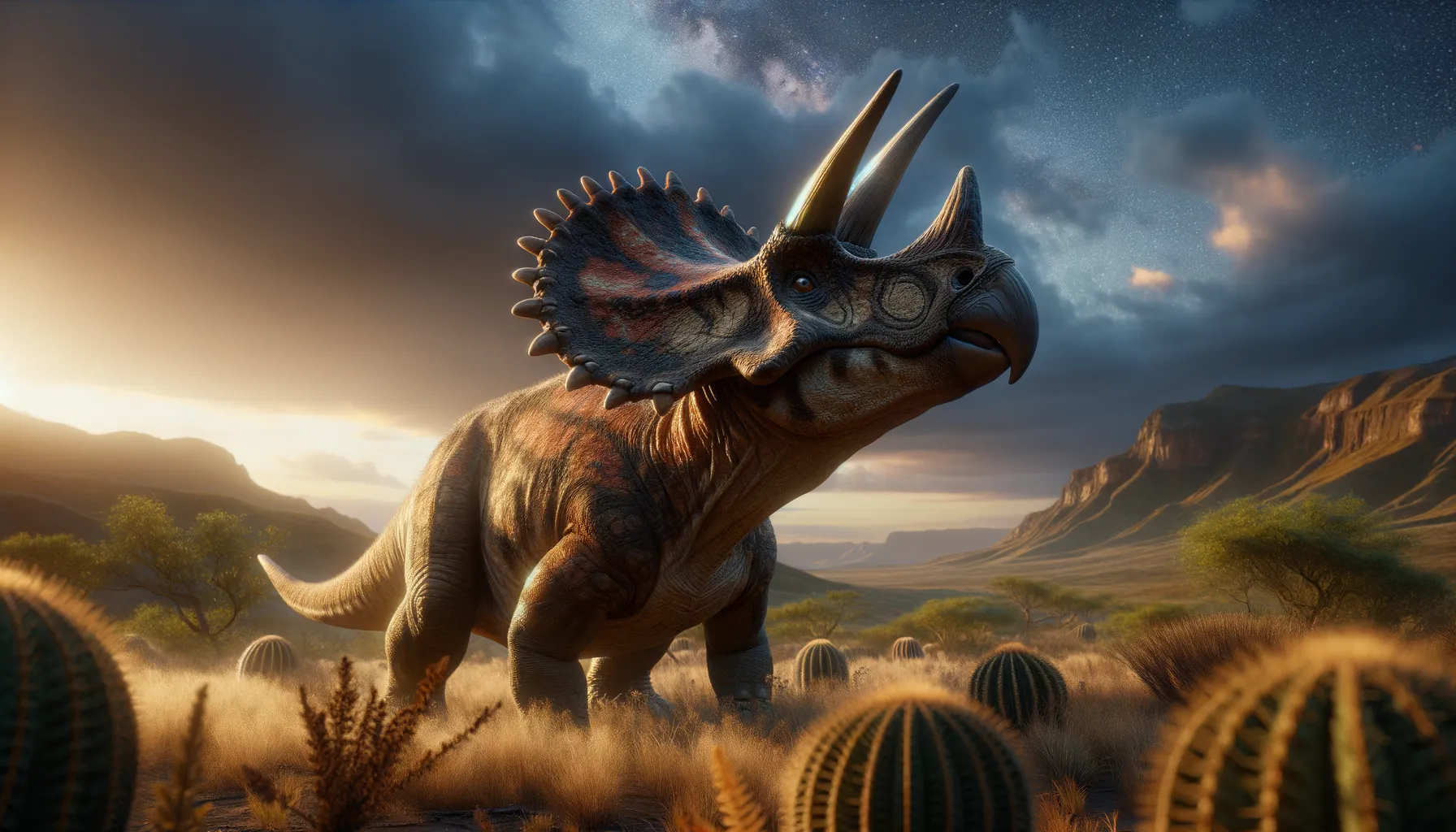
Liaoceratops
A tiny ancestor with giant potential.
Period
Cretaceous
Length
Approximately 1 meter (3 feet) long.
Height
Around 0.6 meters (2 feet) tall.
Weight
Approximately 7-10 kg (15-22 lbs).
Liaoceratops was a small, early relative of the more famous horned dinosaurs like Triceratops. Found in Liaoning, China, it lived during the early Cretaceous period. This dinosaur was notable for its frill and beak-like mouth, adaptations for its herbivorous diet. As one of the earliest known ceratopsians, Liaoceratops provides valuable insight into the evolution of horned dinosaurs, reflecting early stages of the group's characteristic features.
Diet
Liaoceratops was an herbivore, primarily feeding on plants. It likely ate low-lying vegetation using its beak-like mouth to efficiently slice through tough plant material.
Hunting
As an herbivore, Liaoceratops did not hunt for food. Instead, it foraged for plants in its environment, relying on keen senses to detect predators.
Environmental challenges
Liaoceratops faced environmental challenges like avoiding predators and competing with other herbivores for food. Climate changes could have affected the availability of plants in its ecosystem. It needed to navigate the diverse terrain of its habitat, which included both forests and open areas. Adaptations such as vigilance and group behavior likely aided its survival amidst these challenges.
Speed
Likely slow, suitable for a small herbivore.
Lifespan
Estimated to have lived for decades.
First discovery
Discovered in Liaoning, China, in 2002.
Fun Facts
- Liaoceratops was a small dinosaur from the Early Cretaceous period, about 126 million years ago.
- This dinosaur was discovered in what is now China and its name means 'Liao horned face,' referring to the Liao River in China.
- Unlike its larger relatives like Triceratops, Liaoceratops had a much smaller frill and lacked the prominent horns typical of ceratopsians.
- Liaoceratops was relatively small for a dinosaur, approximately the size of a large dog, making it one of the smaller members of the ceratopsian family.
- It is believed that Liaoceratops was an herbivore, likely feeding on low-lying plants using its beaked mouth.
- The discovery of Liaoceratops has provided valuable insight into the early evolution of horned dinosaurs.
- Liaoceratops's fossils were first described by scientists in 2002, highlighting the rapid and continuing discoveries in paleontology.
Growth and Development
Liaoceratops grew from hatchling to adulthood, developing its characteristic frill and beak as it matured. Growth rates would have varied depending on environmental conditions and availability of food. The development of its frill likely played a role in social interactions as well as protection. Studies of its fossils suggest that it underwent typical reptilian growth patterns for its era.
Habitat
Liaoceratops lived in what is now northeastern China, in environments that ranged from lush forests to open areas. This diverse habitat supported a variety of plant life, providing ample food sources. Seasonal changes in temperature and precipitation may have influenced its habitat and lifestyle. The region it inhabited was rich in biodiversity, hosting many other prehistoric animals.
Interaction with other species
Liaoceratops likely interacted with other herbivorous dinosaurs, possibly competing for similar food sources. Predators in its environment would have posed a constant threat, necessitating vigilant behavior. Its interactions may have extended to symbiotic relationships with certain plant species. Fossil records suggest it coexisted with other small dinosaur species in its region.
Natural lifespan
Estimated lifespan of several decades.
Reproduction
Liaoceratops likely laid eggs, typical of dinosaurs. Nesting behavior might have included choosing protected sites to safeguard eggs. Juveniles would have been vulnerable to predators, requiring parental or group care. Reproductive behaviors were possibly influenced by environmental factors like climate and food availability.
Social behaviour
Liaoceratops may have lived in small groups, providing protection against predators. Social behaviors could have included frill displays for communication or dominance. Hierarchies might have existed within groups, impacting mating and foraging. Its social structure would have been crucial for survival in a competitive ecosystem.
Fossil locations
Fossils of Liaoceratops are primarily found in the Liaoning Province of China. The area is known for its rich fossil beds, providing insights into early dinosaur life. Specimens discovered have contributed significantly to understanding ceratopsian evolution. These fossils are key pieces in the puzzle of dinosaur ancestry, especially among small-bodied herbivores.
